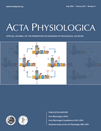
Comprehensive Physiology
Scope & Guideline
Bridging Theory and Practice in Physiology
Introduction
Aims and Scopes
- Multisystem Physiology:
The journal covers a wide range of physiological systems, including cardiovascular, respiratory, renal, gastrointestinal, and neuroendocrine systems, providing insights into how these systems interact and influence overall health. - Pathophysiological Mechanisms:
Comprehensive Physiology emphasizes understanding the mechanisms of disease, exploring how physiological processes are altered in various health conditions, thereby informing potential therapeutic strategies. - Emerging Technologies:
The journal features research employing cutting-edge technologies, such as single-cell sequencing and advanced imaging techniques, to explore physiological processes at unprecedented resolution. - Translational Research:
The journal promotes studies that bridge basic science and clinical application, focusing on how physiological insights can lead to improved diagnosis, treatment, and prevention of diseases. - Environmental and Lifestyle Influences:
Research published in the journal often investigates how environmental factors, such as exercise, nutrition, and pollutants, impact physiological functions and contribute to health disparities.
Trending and Emerging
- Microbiome Research:
There is a growing interest in the role of the microbiome in health and disease, particularly in areas such as metabolism, immunity, and disease pathogenesis, indicating its importance in understanding complex physiological interactions. - Extracellular Vesicles:
The investigation of extracellular vesicles as mediators of intercellular communication and their role in various diseases has gained momentum, highlighting their potential as biomarkers and therapeutic targets. - Metabolic Health and Disease:
Research on metabolic disorders, including obesity and diabetes, is increasingly prominent, reflecting a heightened awareness of the physiological underpinnings of these widespread conditions and their associated comorbidities. - Cardiovascular Physiology:
Papers addressing cardiovascular health, including studies on heart function, vascular responses, and the impact of lifestyle factors, have surged, underscoring the critical importance of cardiovascular research in public health. - Neurophysiology and Behavior:
There is an emerging focus on the connections between neurophysiology, behavior, and mental health, illustrating the growing recognition of the interplay between physiological processes and psychological well-being.
Declining or Waning
- Traditional Physiology:
Topics focusing solely on classical physiology without integrating modern techniques or perspectives have become less prominent, as researchers increasingly seek innovative approaches to understand complex physiological interactions. - Basic Animal Models:
There appears to be a shift away from studies relying solely on traditional animal models, as more emphasis is being placed on human-relevant research and translational studies that directly inform clinical practice. - Static Observational Studies:
Research that primarily presents observational data without robust experimental or mechanistic exploration has decreased, as the journal favors studies that provide deeper insights into physiological processes. - Historical Perspectives:
While historical reviews have their place, there is a noticeable decline in papers focusing exclusively on historical perspectives in physiology, as the journal encourages forward-looking research that addresses current challenges.
Similar Journals

JOURNAL OF MUSCLE RESEARCH AND CELL MOTILITY
Exploring the Interplay Between Cells and Muscle MechanicsJOURNAL OF MUSCLE RESEARCH AND CELL MOTILITY, published by Springer, is a premier journal dedicated to advancing our understanding of muscle biology and cellular motility. With an ISSN of 0142-4319 and an E-ISSN of 1573-2657, this journal stands out in the fields of biochemistry, cell biology, and physiology, proudly holding a Q2 ranking in each of these categories as per 2023 metrics. Covering significant developments from its inception in 1963 to its anticipated contributions through 2024, this journal serves as a vital platform for researchers and professionals to disseminate their findings and insights globally. Although it does not currently offer open access, its robust academic rigor and relevance are evident from its Scopus rankings, making it a crucial resource for those invested in the biological sciences. With a focus on original research articles, reviews, and methodological advancements, the journal fosters innovative collaborations and discussions within the scientific community, making it an invaluable addition to any researcher’s library.

American Journal of Physiology-Regulatory, Integrative and Comparative Physiology
Exploring the Frontiers of Physiological ScienceThe American Journal of Physiology-Regulatory, Integrative and Comparative Physiology, published by the American Physiological Society, serves as a premier platform for disseminating cutting-edge research in the fields of physiology, emphasizing regulatory, integrative, and comparative studies that advance our understanding of bodily functions. With an ISSN of 0363-6119 and E-ISSN of 1522-1490, this esteemed journal is recognized for its substantial impact, maintaining a 2023 Q2 ranking in both the physiology and medical physiology categories as well as commendable positions in Scopus rankings. The journal has been pivotal since its inception in 1977 and continues to foster interdisciplinary dialogue among researchers, professionals, and students alike, contributing significantly to the evolving landscape of physiological sciences. Although it operates under a traditional subscription model, its commitment to high-quality, peer-reviewed content ensures that it remains an essential resource for anyone engaged in physiological research and education.

CANADIAN JOURNAL OF PHYSIOLOGY AND PHARMACOLOGY
Advancing the Frontiers of Biomedical ResearchCanadian Journal of Physiology and Pharmacology, published by Canadian Science Publishing, is a leading peer-reviewed journal dedicated to advancing knowledge in the fields of physiology and pharmacology. With an ISSN of 0008-4212 and an E-ISSN of 1205-7541, this journal has been at the forefront of biomedical research since its inception in 1964. The journal operates within a constrained access model, ensuring a selective dissemination of high-quality research, while maintaining its esteemed position in the Q3 quartile across multiple relevant categories such as Medicine, Pharmacology, and Physiology as of 2023. Researchers, professionals, and students alike will find the journal a valuable resource for emerging trends and comprehensive studies that shape contemporary science, as evidenced by its competitive Scopus rankings. The Canadian Journal of Physiology and Pharmacology is vital for fostering scholarly dialogue and innovation in the scientific community, encouraging contributions that promote a deeper understanding of physiological and pharmacological phenomena.

JOURNAL OF PHYSIOLOGY-LONDON
Exploring the Depths of Physiology and Sports ScienceJOURNAL OF PHYSIOLOGY-LONDON, published by WILEY, stands as a prestigious beacon in the fields of Physiology and Sports Science. Established in 1878, this journal has a rich history of disseminating crucial research findings and advancing scientific knowledge, continuing its impact into the present day with an anticipated convergence in 2024. Recognized for its excellence, it ranks in the Q1 category for both Physiology and Sports Science in 2023, cementing its position within the top echelons of academic publications. With a Scopus rank of #26 out of 193 in the Biochemistry, Genetics and Molecular Biology _ Physiology category, the journal boasts an impressive 86th percentile, reflecting its high-quality contributions to the scientific community. Although not open access, its extensive archive and reputation ensure that it remains a vital resource for researchers, professionals, and students eager to stay at the forefront of physiological science. For those looking to deepen their understanding of physiological mechanisms and their applications, the JOURNAL OF PHYSIOLOGY-LONDON is an indispensable resource.

RESPIRATORY PHYSIOLOGY & NEUROBIOLOGY
Diving Deep into the Science of Breathing and Brain FunctionRESPIRATORY PHYSIOLOGY & NEUROBIOLOGY, published by Elsevier, is a prominent journal in the fields of respiratory medicine, neurobiology, and physiology. With an ISSN of 1569-9048 and E-ISSN 1878-1519, this journal serves as an essential platform for disseminating high-quality original research and reviews that explore the intricate relationships between respiratory function and neural controls. Located in the Netherlands, it boasts an impressive standing within its field, categorically placed in the Q3 quartile for Neuroscience and Physiology and Q2 for Pulmonary and Respiratory Medicine according to the 2023 metrics. With a Scopus rank of #58 in Pulmonary and Respiratory Medicine and a robust impact factor indicative of its academic influence, the journal aims to foster advancement in understanding the physiological and neurobiological aspects of respiration. Although the journal is not open access, its content is vital for researchers, professionals, and students eager to contribute to the expanding knowledge base in these critical scientific domains.

CHINESE JOURNAL OF PHYSIOLOGY
Advancing the frontiers of physiological research.CHINESE JOURNAL OF PHYSIOLOGY, published by WOLTERS KLUWER MEDKNOW PUBLICATIONS, has been a vital resource since its inception in 1971, catering to the expansive field of physiology. Operating out of Taiwan, this journal addresses critical research in both general and medical physiology, providing a platform for innovative studies that contribute significantly to the understanding of biological processes. With an emphasis on disseminating high-quality, peer-reviewed articles, it holds a Q4 ranking in Physiology and a Q3 ranking in Medical Physiology as of 2023, reflecting its commitment to advancing physiological science. The ISSN for this journal is 0304-4920 and the E-ISSN is 2666-0059. While access options are not available as open access, researchers and professionals can still benefit from its valuable insights. Notably, it ranks #78/113 in Medicine - Physiology and #159/193 in Biochemistry, Genetics, and Molecular Biology - Physiology on Scopus, indicating its growing influence in the scientific community. We invite researchers, professionals, and students alike to explore the wealth of knowledge featured within the pages of the CHINESE JOURNAL OF PHYSIOLOGY.

Acta Physiologica
Pioneering Research for a Healthier TomorrowActa Physiologica is a premier, peer-reviewed journal published by WILEY, dedicated to the dissemination of high-quality research across the field of physiology. With an impressive impact factor reflective of its Q1 category ranking in Physiology for 2023, this journal is a vital resource for researchers, professionals, and students alike, seeking to explore the complexities of biological systems. The journal is indexed with a commendable Scopus rank of #18 out of 193 in its category, placing it within the top 10% of its field, which underscores its influence and citation frequency within the academic community. Acta Physiologica publishes a variety of articles that address fundamental physiological concepts, innovative methodologies, and cross-disciplinary research. With its open access options, the journal ensures that cutting-edge knowledge is readily accessible, fostering an environment of collaboration and advancement in the study of physiology. Spanning from 2006 to 2024, the journal continues to be at the forefront of physiological research and education, encouraging the global sharing of knowledge through its comprehensive content.

Function
Catalyzing interdisciplinary approaches to enhance scientific understanding.Function is a pioneering open access academic journal published by Oxford University Press, dedicated to advancing research in the fields of Cancer Research, Cell Biology, Molecular Medicine, and Physiology. Since its inception in 2020, this journal has quickly established itself as a vital resource for researchers and professionals alike, achieving a commendable impact factor in the 2023 rankings, where it stands in the Q2 quartile across multiple categories. Located in the heart of the United Kingdom, Function aims to foster a global exchange of knowledge by providing free and unrestricted access to cutting-edge research, facilitating collaboration and innovation within the scientific community. With a robust focus on emerging discoveries and interdisciplinary approaches, this journal encourages contributions that unravel the complexities of biological functions, paving the way for transformative advancements in healthcare and related sciences. As it converges from 2020 to 2024, Function continues to be an invaluable platform for disseminating research that has the potential to shape the future of medicine and biology.

JOURNAL OF PHYSIOLOGY AND BIOCHEMISTRY
Connecting Theoretical Insights with Practical ApplicationsJOURNAL OF PHYSIOLOGY AND BIOCHEMISTRY, published by Springer in the Netherlands, serves as a pivotal platform for disseminating high-quality research within the fields of physiology, biochemistry, and related biomedical sciences. With an impressive impact factor reflected in its categorization as Q2 in Biochemistry and Q1 in Medicine (miscellaneous), this journal fosters a vibrant community of scholars dedicated to advancing knowledge and innovation. The journal’s broad scope encompasses a wide range of topics from cellular mechanisms to systemic physiology, making it relevant for both theoretical and applied sciences. Researchers and practitioners are encouraged to utilize the available Open Access options to reach a wider audience. The journal’s continuous contribution to the scientific dialogue since its inception in 1996 positions it as a key resource for professionals and students alike, facilitating the exploration of cutting-edge topics and collaborative research opportunities.

FISH PHYSIOLOGY AND BIOCHEMISTRY
Advancing Understanding of Fish PhysiologyFISH PHYSIOLOGY AND BIOCHEMISTRY, published by Springer, is a leading journal in the fields of aquatic science, biochemistry, and physiology, with an impressive trajectory since its inception in 1986 and continuing through 2024. Operating from the Netherlands, this journal serves as a vital platform for researchers, professionals, and students alike, showcasing innovative studies that explore the physiological and biochemical aspects of fish, contributing significantly to our understanding of aquatic ecosystems and their inhabitants. With a robust impact factor reflected in its Q1 status in Aquatic Science and notable rankings in other relevant categories, FISH PHYSIOLOGY AND BIOCHEMISTRY maintains a strong scholarly influence, evidenced by its Scopus ranking within the top quartiles of various biological sciences disciplines. While the journal does not currently offer open access options, it remains a cornerstone for advancing knowledge and fostering collaboration within the community dedicated to aquatic biology and related fields.